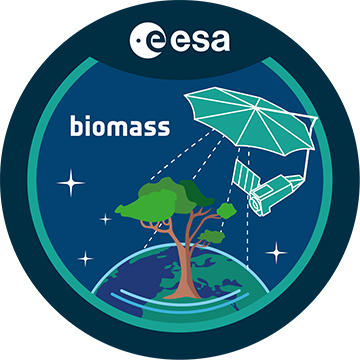Importance of Cal/Val Activities
Listen to the Podcast
Calibration and validation (Cal/Val) are critical components in the lifecycle of Earth observation satellites, ensuring that sensor measurements remain accurate and reliable throughout the mission. Calibration refers to the process of adjusting and fine-tuning satellite instruments against reference standards to maintain measurement fidelity. Validation, in contrast, involves verifying that the processed data products correctly represent real-world conditions, typically through comparison with independent ground-based or airborne measurements. These activities serve several essential purposes:
- Ensuring Data Accuracy: Satellite sensors must provide precise measurements to support scientific research, environmental monitoring, and operational applications.
- Building User Confidence: Accurate and validated data enable stakeholders to rely on satellite observations for climate studies, land use monitoring, and disaster response.
- Monitoring Instrument Performance: Instruments may experience gradual degradation due to environmental factors in space. Regular calibration helps detect and correct biases.
- Ensuring Interoperability: Many applications require data fusion from multiple satellites. Cal/Val ensures consistency between different missions and sensors.
- Supporting Operational Readiness: Agencies and organizations using satellite data need reliable information to implement policies and make informed decisions.
- Advancing Scientific Research: Robust satellite observations enable breakthroughs in fields such as meteorology, hydrology, and forest monitoring.
Cal/Val Methodologies and Implementation
Cal/Val efforts involve several key steps:
- Pre-Launch Calibration: Conducted in controlled laboratory environments, pre-launch calibration establishes the baseline performance of instruments. This process often includes thermal vacuum testing, radiometric calibration, and spectral characterization to simulate space conditions.
- On-Orbit Calibration: After launch, calibration continues using onboard calibration devices such as blackbodies, solar diffusers, or onboard reference targets. In some cases, celestial bodies (e.g., the Moon) are used as stable calibration sources.
- Validation Campaigns: Ground-based field campaigns collect in-situ measurements that serve as reference data for validating satellite-derived products. These campaigns involve deploying sensors in targeted study areas to measure relevant parameters (e.g., biomass, soil moisture, or atmospheric properties).
- Airborne and UAV-Based Calibration: Aircraft and drones equipped with sensors similar to those onboard satellites can provide high-resolution datasets for validation purposes. Airborne Synthetic Aperture Radar (SAR) campaigns are particularly useful for radar missions.
- Cross-Calibration: By comparing measurements from multiple satellites, discrepancies can be identified and corrected. This approach is particularly relevant when ensuring consistency in long-term climate data records.
- Use of Artificial Calibration Targets: Some missions use precisely designed reflectors or reference sites to provide known calibration points for instrument validation.
Typical Duration of Cal/Val Phases
The duration of Cal/Val phases depends on the mission objectives and sensor complexity. Generally, it consists of:
- Initial Cal/Val Phase: The first few months post-launch are dedicated to intensive calibration efforts to ensure that instruments are operating correctly. This phase may last from six months to over a year.
- Operational Cal/Val: Many missions continue calibration throughout their operational lifetime to compensate for sensor degradation and environmental influences.
- Extended Validation: Some missions, especially those with climate applications, require continuous validation efforts to maintain long-term data quality.
For example, ESA’s Envisat mission underwent a six-month Cal/Val phase, while Sentinel missions have ongoing calibration activities spanning years.
Cal/Val Activities for the ESA Biomass P-Band Mission
The European Space Agency’s (ESA) Biomass mission, planned for launch in 2025, will be the first spaceborne mission to use P-band Synthetic Aperture Radar (SAR) for forest biomass measurement. The mission aims to map global forest structure, estimate biomass, and assess carbon stocks, making precise Cal/Val activities essential.
Significance of Cal/Val for the Biomass Mission
P-band SAR is capable of penetrating dense forest canopies, offering unique insights into vegetation structure. However, given the unprecedented nature of this technology in spaceborne applications, rigorous Cal/Val activities are necessary to:
- Validate Forest Biomass Estimates: Ensuring that radar-derived biomass measurements align with ground truth data.
- Develop and Refine Retrieval Algorithms: Improving models that transform raw radar signals into meaningful biomass estimates.
- Assess Environmental Interactions: Studying how soil moisture, topography, and forest composition influence radar backscatter.
- Establish Long-Term Data Continuity: Comparing P-band observations with previous biomass assessments from optical and L-band radar sensors.
Implementation of Biomass Cal/Val Activities
ESA has structured the Cal/Val activities for Biomass to involve:
- Ground-Based Measurements: Researchers will conduct field campaigns measuring tree height, diameter, and density in representative forests worldwide.
- Airborne SAR Observations: Aircraft equipped with P-band radar will simulate satellite acquisitions, providing high-resolution datasets for validation.
- Collaboration with External Partners: ESA has invited researchers and institutions to contribute to external validation efforts, ensuring broad scientific input.
- Comparison with Historical Datasets: Integrating past biomass datasets from airborne LiDAR and ground inventories to enhance validation accuracy.
Duration and Long-Term Calibration Considerations
The Biomass mission’s Cal/Val phase will span at least several months post-launch, with extended calibration and validation efforts continuing throughout the mission’s lifetime. Since P-band SAR has not been widely used in spaceborne applications, sustained Cal/Val will be crucial for refining biomass retrieval models and improving long-term carbon monitoring capabilities.
Conclusion
Cal/Val activities are fundamental to the success of Earth observation missions, ensuring high-quality, reliable data for scientific and operational applications. The ESA Biomass mission, as a pioneering endeavor in spaceborne P-band radar, requires a particularly rigorous validation framework. By implementing comprehensive ground, airborne, and cross-calibration techniques, the mission will provide essential insights into global forest biomass dynamics, supporting climate change mitigation efforts and carbon monitoring initiatives.
Expand Your Knowledge – Dive Deeper
Further Reading
- ESA Biomass Mission
- External Calibration and Validation of the Biomass Mission
- Biomass Products Verification and Validation Plan
- Quegan, S., Lomas, M., Papathanassiou, K. P., Kim, J. S., Tebaldini, S., Giudici, D., … & Paillou, P. (2018, July). Calibration challenges for the biomass P-band SAR instrument. In IGARSS 2018-2018 IEEE International Geoscience and Remote Sensing Symposium (pp. 8575-8578). IEEE.
- [Leanza, A., Carbone, A., Imbembo, E., Rommenb, B., Willemsen, P., Fehringer, M., … & Scipal, K. (2022, July). Earth explorer biomass P-band SAR mission: Status and calibration concept. In EUSAR 2022; 14th European Conference on Synthetic Aperture Radar (pp. 1-4). VDE.]



Responses